
Madhyamakavatara: 8-Week Program Week 5 Pre-Reading
Summary
Date: 5 July
Topic: Emptiness of Self
Text: Madhyamakavatara (Introduction to the Middle Way) 6:120-6:178 (Chapter 6, Verses 120 to 178), pages 244 to 296 in the PDF version. (To download a copy, the instructions are here)
Questions: What does it mean that self is empty? How can we explain our 1st-person subjective experience and conscious awareness? What is the difference between ‘self’ and ‘person’?
Keywords: self, aggregates, person, experience, subjectivity, consciousness, mind
Also available: audio/video recordings and transcript/translations for Week 5.
Pre-Reading – Recommended
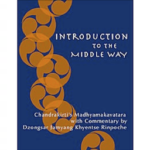
Dzongsar Khyentse Rinpoche (2004) Introduction to the Middle Way
In Week 5 we will be refuting the truly existing self of the person. In the Madhyamakavatara (Introduction to the Middle Way) the corresponding verses are Chapter 6, Verses 120 to 178, pages 244 to 296 in the PDF version.
Pre-Reading (Optional)
[Note: pre-readings are arranged alphabetically by author. This is not intended to suggest an order of reading]
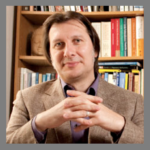
Coseru, Christian (2012) ➜Mind in Indian Buddhist Philosophy, Stanford Encyclopedia of Philosophy
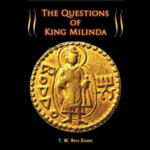
Rhys Davids, Thomas William (trans.) (1894) ➜Chapter 1: Lakkhana Pañha. The Distinguishing Characteristics of Ethical Qualities in The Questions of King Milinda, Book II (SBE35)
The Questions of King Milinda (Milindapañha) purports to record a dialogue between the Buddhist sage Nāgasena, and the Indo-Greek king Menander I (Pali: Milinda) of Bactria. The Milindapañha is included in the Burmese edition of the Pāli Canon of Theravada Buddhism as the book of Khuddaka Nikaya, but it does not appear in the Thai or Sri Lankan versions of the Pāli Canon. Rhys Davids holds the text in high esteem, saying it is: “undoubtedly the masterpiece of Indian prose, and indeed is the best book of its class, from a literary point of view, that had then been produced in any country.” Chapter 1 of Book II also introduces the simile of the chariot.
The use of a chariot as a simile for the self first appears in the ➜Vajira-Sutta (SN 5.10), where the Buddhist nun Vajira says:
Why now do you assume ‘a being’?
Mara, have you grasped a view?
This is a heap of sheer constructions:
Here no being is found.
Just as, with an assemblage of parts,
The word ‘chariot’ is used,
So, when the aggregates are present,
There’s the convention ‘a being.’
It’s only suffering that comes to be,
Suffering that stands and falls away.
Nothing but suffering comes to be,
Nothing but suffering ceases.
In the Milindapañha, a later text from around 100BCE, the monk Nāgasena uses this same simile in greater detail, asking King Milinda a series of rhetorical questions about his chariot:
‘Is it the axle that is the chariot?’ … ‘Is it the wheels, or the framework, or the ropes, or the yoke, or the spokes of the wheels, or the goad, that are the chariot?’ … ‘Then is it all these parts of it that are the chariot?’
He says to the King:
‘I can discover no chariot. Chariot is a mere empty sound. What then is the chariot you say you came in?’
The King accepts Nāgasena’s refutation, and concludes that the chariot is just a conventional designation. It cannot be said to be a truly existing phenomenon.

Wikipedia (undated) ➜Early Buddhist Schools, Wikipedia
In early Buddhism the monastic sangha split into many schools, due originally to differences in vinaya and later also due to doctrinal differences and geographical separation of groups of monks. Traditionally these are described as the 18 schools, although as this article points out, “there are several overlapping lists of 18 schools preserved in the Buddhist tradition, totalling about twice as many.” This article brings all the overlapping sources together into a helpful ➜”Hypothetical combined list” that lists all the early Buddhist schools, including those we meet as our opponents during the refutation of the truly existing self of the person: the Sammitīya (verse 6:126) and the Vatsīputrīya (verse 6:146).

Wilson, Joe (1980) ➜Chandrakirti’s Sevenfold Reasoning: Meditation on the Selflessness of Persons [PDF], Library of Tibetan Works and Archives (1st print edition 1980; 1st electronic edition 2001, Siddhacarya Publications)
A commentary on Chandrakirti’s famous Sevenfold Reasoning of the Chariot, one of the most well-known parts of his refutation of the true existence of the self of the person, which appears in verses 6:152-6:165 of the Madhyamakavatara)
[From introduction]: an explanation of Chandrakirti’s presentation of the Sevenfold Reasoning found in the Clear Exposition of the Presentation of Tenets, a Beautiful Ornament for the Meru of the Subduer’s Teaching of Jang-kya (lcang skya hu thog thu ye shes bstan pa’i sgron me, 1717-1786) along with an explanation of the context of the Sevenfold Reasoning in Buddhist philosophy as a whole.
Pre-Reading – Contemporary perspectives on mind/consciousness (Optional)

Introduction
The contemporary debate on the philosophy of consciousness is very rich, lively and complex, and is becoming increasingly relevant with accelerating progress in artificial intelligence – which is bringing with it all kinds of questions of machine intelligence, machine ethics and the nature of consciousness.
Simplifying enormously – given our present interest in establishing the nondual Madhyamaka view of the Middle Way and refuting the true existing of self (which includes refuting truly existing 1st-person consciousness) – we may identify two broad positions within the debate:
- Dualists: building on roots in ancient Greek philosophy and the 17th-century philosophy of René Descartes, contemporary ➜dualists hold that there is an unexplained and possibly irreconcilable dualistic split between 3rd-person accounts of the material world and 1st-person accounts of conscious experience – in other words, between ‘matter’ and ‘consciousness’. This has been expressed as the ➜”Hard Problem of Consciousness”, namely how does subjective conscious experience (including the experience of ➜’qualia’) arise from (or on the basis of) the physical brain? Authors aligned with this perspective in the pre-reading include philosopher David Chalmers and Buddhist teacher Alan Wallace.
- Non-dualists: opposed to the dualists, contemporary non-dualists do not accept that there is an irreconcilable dualistic split between matter and consciousness, and therefore do not accept that there is a “Hard Problem” or “explanatory gap” that needs to be bridged. Authors aligned with this perspective in the pre-reading include philosophers Daniel Dennett and Thomas Metzinger, and contemporary Buddhist writer Jayarava. Jay Garfield, who is uniquely able to speak about both Western and Buddhist traditions, also dismisses Chalmers and the ‘new mysterians’ and sides with Dennett. Metzinger’s article “Enlightenment 2.o” (see below) follows Chandrakirti both in positing “a world without objects or selves” and in seeking to avoid the extremes of nihilism (“vulgar forms of materialism”) and eternalism (“irrationalism and fundamentalism”).
From our perspective as followers of the Middle Way, an important aspect of the debate between these two positions hinges on whether contemporary non-dualists are essentially aligned with the Madhyamaka or opposed to it. We need to determine where they stand, and whether should should accept their positions or attempt to refute them:
- Madhyamaka-friendly: according to one understanding, (some) contemporary non-dualists are aligned with the Madhyamaka in the sense that they reject all extremes of true existence in the ultimate truth, while allowing for scientifically-based explanations of consciousness in the conventional truth and examining whether our scientific understanding has any implications for how to live a ‘good life’ in the everyday world – much like a 21st-century version of the Yogacara-Svatantrika-Madhyamaka.
- Madhyamaka-unfriendly: alternatively, (some) contemporary non-dualists might qualify as Chandrakirti’s opponents either by virtue of being reductionist nihilists (which is an accusation that contemporary dualists level at them, much as Chandrakirti’s opponents levelled at him), or because they are positing the extreme view of a truly-existing monism.
Debates around monism in particular can be challenging to untangle, as contemporary philosophy (especially around the mind-body problem) tends to see the opposite of dualism as monism, and doesn’t always distinguish between truly existing monism and non-truly existing monism (i.e. nonduality). This distinction is also at the heart of confusion about the differences between Advaita Vedanta and Madhyamaka. And given that some contemporary non-dualists refer to themselves as ‘monist’, we need to understand what they mean by this. Once again, we need to ask whether we should accept their positions or attempt to refute them:
- Monism: philosophers who believe in truly existing ➜monism reject duality and assert a truly existing single reality or substance, in the way our Samkhya opponents explain Atman as the ultimate reality, or the way that our Cittamatra opponents explain that all seemingly dualistic phenomena are actually “Mind-Only” and arise from the alayavijñana. Likewise, in modern Hinduism, Advaita Vedanta is ➜understood as “absolute monism”. If contemporary non-dualists assert truly existing monism, for example in the form of truly existing materialism, then they qualify as Chandrakirti’s opponents. In making our assessment we might also want to consider whether the materialism of contemporary science is the same as the truly existing materialism of the ancient Indian Charvaka school we met in Week 4. When Dzongsar Khyentse Rinpoche taught the ➜Two Truths in Bodh Gaya in October 2014, he said that we should not see scientists as enemies of Chandrakirti, and instead we should understand the scientific notion of ➜falsifiability as part of the definition of valid relative truth. As His Holiness the Dalai Lama has also said, we need to accept that conventional truth in the scientifically literate 21st century is very different from conventional truth in pre-scientific India and Tibet, and there is no conflict between science (correctly understood as a falsifiable attempt to describe and explain regularities in the conventional world) and Buddhism (correctly understood in terms of the Two Truths).
- Nonduality/naturalism: others reject dualism, but without asserting anything truly existing in its place. They hold a “view” of monism in much the same way that Chandrakirti holds a “view” of emptiness – in other words they do not have any truly existing views, but use language in order to refute their opponents and teach a correct understanding of relative truth. If contemporary non-dualists do not assert any views of true existence, but are instead just seeking a good scientific understanding of conventional truth, then they are not Chandrakirti’s opponents. As Garfield (2015) concludes, there is no longer room for metaphysical theories of consciousness, which means that we will end up with naturalistic or scientific explanations.
The selection of pre-readings for Week 5 does not attempt to provide an exhaustive overview of contemporary philosophy of consciousness or cognitive science. Rather, it offers some contrasting positions that we might engage with – in the spirit that Nagarjuna and Chandrakirti engaged with their opponents in ancient India. Hopefully we might both be able to identify the strengths and weaknesses in their positions, and also learn about of the strengths and weaknesses of our own.
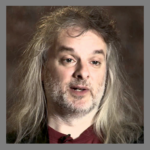
Chalmers, David (2010) ➜”The Singularity: A Philosophical Analysis” [PDF], Journal of Consciousness Studies, Vol. 17 (9-10), 7-65
Chalmers sets out his views on the philosophy of consciousness in the context of reflections on contemporary questions in artificial intelligence, such as whether it will become possible to upload our brains (and possibly our ‘selves’?) to machines. As in his previous articulations of the “Hard Problem of Consciousness”, he sets out a dualist theory where “consciousness seems to be a further fact about conscious systems”:
Can an upload be conscious? The issue here is complicated by the fact that our understanding of consciousness is so poor. No-one knows just why or how brain processes give rise to consciousness. Neuroscience is gradually discovering various neural correlates of consciousness, but this research program largely takes the existence of consciousness for granted. There is nothing even approaching an orthodox theory of why there is consciousness in the first place. Correspondingly, there is nothing even approaching an orthodox theory of what sorts of systems can be conscious and what systems cannot be.
One central problem is that consciousness seems to be a further fact about conscious systems, at least in the sense that knowledge of the physical structure of such a system does not tell one all about the conscious experiences of such a system. Complete knowledge of physical structure might tell one all about a system’s objective behaviour and its objective functioning, which is enough to tell whether the system is alive, and whether it is intelligent in the sense discussed above. But this sort of knowledge alone does not seem to answer all the questions about a system’s subjective experience.
A famous illustration here is Frank Jackson’s case of Mary, the neuroscientist in a black-and-white room, who knows all about the physical processes associated with colour but does not know what it is like to see red. If this is right, complete physical knowledge leaves open certain questions about the conscious experience of colour. More broadly, a complete physical description of a system such as a mouse does not appear to tell us what it is like to be a mouse, and indeed whether there is anything it is like to be a mouse. Furthermore, we do not have a “consciousness-meter” that can settle the matter directly. So given any system, biological or artificial, there will at least be a substantial and unobvious question about whether it is conscious, and about what sort of consciousness it has.
Still, whether one thinks there are further facts about consciousness or not, one can at least raise the question of what sort of systems are conscious. Here philosophers divide into multiple camps. Biological theorists of consciousness hold that consciousness is essentially biological and that no nonbiological system can be conscious. Functionalist theorists of consciousness hold that what matters to consciousness is not biological makeup but causal structure and causal role, so that a nonbiological system can be conscious as long as it is organized correctly.
The philosophical issue between biological and functionalist theories is crucial to the practical question of whether not we should upload. If biological theorists are correct, uploads cannot be conscious, so we cannot survive consciously in uploaded form. If functionalist theorists are correct, uploads almost certainly can be conscious, and this obstacle to uploading is removed.
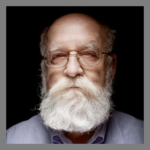
Dennett, Daniel (1992) ➜”The Self as a Centre of Narrative Gravity”, in: F. Kessel, P. Cole and D. Johnson (eds.) Self and Consciousness: Multiple Perspectives.
In this book chapter, Dennett presents a brilliant deconstruction of the truly existing self of the person, and like Chandrakirti he concludes that our idea of self is a baseless “theorist’s fiction”:
A center of gravity is just an abstractum. It’s just a fictional object. But when I say it’s a fictional object, I do not mean to disparage it; it’s a wonderful fictional object, and it has a perfectly legitimate place within serious, sober, echt physical science. A self is also an abstract object, a theorist’s fiction. The theory is not particle physics but what we might call a branch of people-physics; it is more soberly known as a phenomenology or hermeneutics, or soul-science (Geisteswissenschaft). The physicist does an interpretation, if you like, of the chair and its behaviour, and comes up with the theoretical abstraction of a centre of gravity, which is then very useful in characterizing the behaviour of the chair in the future, under a wide variety of conditions. The hermeneuticist or phenomenologist — or anthropologist — sees some rather more complicated things moving about in the world — human beings and animals — and is faced with a similar problem of interpretation. It turns out to be theoretically perspicuous to organize the interpretation around a central abstraction: each person has a self (in addition to a centre of gravity). In fact we have to posit selves for ourselves as well. The theoretical problem of self-interpretation is at least as difficult and important as the problem of other-interpretation.
His thought experiment of Gilbert, an artificially intelligent novel-writing robot, beautifully illustrates the process of self-authorship that we all engage in, consciously or not. And he concludes that the robot will end up creating a baseless fictional self-narrative just as we do:
We can still maintain that the robot’s brain, the robot’s computer, really knows nothing about the world; it’s not a self. It’s just a clanky computer. It doesn’t know what it’s doing. It doesn’t even know that it’s creating a fictional character. (The same is just as true of your brain; it doesn’t know what it’s doing either.)
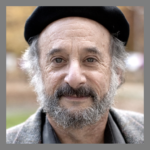
Garfield, Jay (2015) “Consciousness”, Chapter 5 in ➜Engaging Buddhism [PDF, free download of complete book]
An excellent overview of contemporary Western philosophical positions in philosophy of mind and how they relate to Madhyamaka and the other Buddhist schools. He concludes that ideas of qualia and zombies are untenable, dismisses the views of Chalmers and the ‘new mysterians’ as incoherent, and concludes that Dennett’s view of heterophenomenology is – unlike his contemporary opponents – not in conflict with the Madhyamaka (pp.199-200):
What we might take as unproblematic explananda for, or commonsense intuitions to be accommodated by theories of self-knowledge, might instead be illusions or delusions to be explained away.
Long ago, Dennett (1991) made the same point, perhaps channeling Buddhist ideas unawares. He distinguishes between two approaches to phenomenology. (44-45) The first takes as its task the mapping of our inner life, of inner episodes, processes and experiences as they are—of the structure of consciousness, we might say—taking as authoritative introspective reports of that inner world and our sense of what it must be like. The second takes as its task mapping the claims that people make about their inner life and the popular lore about what consciousness and its contents must be like—a kind of anthropology of phenomenological reflection.
While it might appear that the former is serious philosophy and the latter is merely a superficial survey of attitudes, Dennett points out that it is only the second that has any respectable epistemic credentials. We can know what people say about their inner lives; but only if we take people to be oracular about those lives do we have any grounds for taking the inner appearances or experiences they report seriously as entities, and that requires an improbable model of introspection, one taken for granted by almost everyone in the contemporary consciousness literature in virtue of regarding our intuitions about our own inner experience to constitute the data to which a theory of consciousness must respond.
From a Buddhist perspective, we can recast this as the distinction between exploring an illusion vs taking that illusion for granted as reality. We know that our inner sense, like our outer sense, is fallible; we know that we tend to reify ourselves and to take our introspective awareness as well as our external perceptual faculties as more reliable than they are. We know that our understanding of our lives is deeply theoretically infected and that our theories are always tentative. To take what introspection delivers as reality is therefore, from a Buddhist perspective, simply to embrace delusion. On the other hand, to take what we believe about introspection seriously as a matter for reflection is to take delusion as an object for study, and that may be the first step not to an oracular understanding of an inner reality, but at least to an understanding of our own capacity to obscure whatever that reality might be.
He concludes that Madhyamaka and contemporary philosophy of mind find common ground in the realization that consciousness is not to be understood through metaphysical imputations, but rather though natural or scientific explanations of the psychology and physiology of interacting processes, conditions and objects (p.201):
This suggests that a Buddhist perspective can do a great deal to enrich contemporary discussions of consciousness. It brings a suite of insights that can refigure debates and ways of thinking about the topic. Instead of seeing consciousness as a singular phenomenon, a natural surd perhaps requiring non-natural explanations, the Buddhist asks us to think of consciousness as a family of relations that subjects might bear to their objects. Its different levels and manifestations may require very different kinds of explanations. But in each case they will take the form of natural explanations of the relations between psychological processes and their conditions or objects, not mysterious powers of a self or subjectivity.
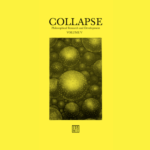
Metzinger, Thomas (2009) ➜”Enlightenment 2.0″ [PDF] in Collapse V, 187-215
Metzinger offers a profoundly important contemporary philosophical expression of the view that our world is “a world without objects or selves” – a conclusion that Chandrakirti also reaches in the Madhyamakavatara where he refutes the true existence of the self of phenomena (see Weeks 3 and 4) and the self of the person (see Week 5). Ever since ➜Heraclitus famously said “No man ever steps in the same river twice”, some philosophers have mistakenly assumed that the lack of true existence of self-as-object can be understood as the existence of self-as-process. Many of us might intuitively (and wrongly) understand Buddhism to be setting out a ➜”process ontology” in just this way, namely that the “self” does not truly exist in the sense of being independent and unfabricated (our ego-clinging notwithstanding), but it does exist as a changing yet nevertheless conventionally identifiable process – much like Heraclitus’ river. However this is still an extreme view and, like Chandrakirti, Metzinger rejects this view:
My perception is that some who now jump onto the ‘self-as-process’ reading (which I offered myself in the very first paragraph of Being No One) perhaps only do so because this wording has a trendy ‘narrative’ ring to it […] But there is no narrator, just selfless dynamical self-organization, and if the self is a process, then the least we must admit is that it is a very intermittent, patchy one – it comes to an end every night, in dreamless deep sleep. And waking up is obviously not performed by some transcendental technician of subjectivity pushing a magical reboot button in our brain – there is no subpersonal ‘narrator’ or ‘author’ piloting the conscious self. But it is also true that we do need good, modern neurophenomenology providing us with new conceptual instruments; a phenomenology that is not driven solely by ideological anti-reductionist resentment, but one that is at once historically and empirically well-informed. This is an extremely demanding challenge.
In much the same way that Madhyamaka philosophers seek to establish the view of the Middle Way (Dharmakaya or ultimate bodhicitta) to support a path based on compassion (Rupakaya or relative bodhicitta), Metzinger sees the need for a view grounded in contemporary analytical philosophy to underpin a “sincere sensitivity to ethical issues, a commitment to liberalism and democracy”. And like the Madhyamaka philosophers, he wishes to avoid the extremes of nihilism (“vulgar forms of materialism”) and eternalism (“irrationalism and fundamentalism”):
A sincere sensitivity to ethical issues, a commitment to liberalism and democracy – if taken seriously – are very radical affairs, not something old-fashioned, and if philosophical conservatism (you may be disappointed to hear) means keeping such sociocultural interest alive then we certainly need good, professional, analytical philosophy to do this. The overall situation on our planet reminds me of one big ocean of irrationality, suffering and confusion – if more conservative philosophy’s ‘complicity’ with certain social institutions can help at least a little bit to improve our situation, then this is a good thing.
I think, taken as a whole, humankind will prove to be absolutely robust in its resistance against the growth of knowledge, against what I sometimes like to call the ‘Enlightenment 2.0’ introduced by modern philosophy of mind and cognitive neuroscience, AI and AL, etc. There may be some rare individuals or even groups who find an interesting new synthesis of intellectual honesty and spirituality. But on a larger scale I believe two types of reactions are most likely to spread: A primitive form of hedonism, based on vulgar forms of materialism and a cynical, simplistic version of normative neuroanthropology; and the rise of irrationalism and fundamentalism, even in secular societies, supported by all those who desperately seek emotional security and espouse closed worldviews, simply because they cannot bear the naturalistic turn in the image of humankind. Both types of reaction are deeply human, and obviously, both are a danger to the very few stable, open societies we have established on this planet so far.
As we have seen in previous weeks, the Madhyamaka classifies ignorance into two kinds: innate ignorance and imputed ignorance. Innate or co-emergent ignorance refers to the basic fixation on the thought of “I” shared by all sentient beings, whereas imputed ignorance includes all the dualistic theories, concepts and narratives of self that all too easily take root in the fertile soil of innate ignorance. As Tulku Urgyen Rinpoche says, “Co-emergent ignorance is simply to forget. Conceptual ignorance comes in the moment after forgetting, forming thought after thought.” Contemporary philosophers of mind like Metzinger and Daniel Dennett see a similar challenge originating in our “folk psychology” and its associated “folk epistemology”:
Folk psychology is not only a theory, but also a practice. […] The ‘manifest image’ is anchored in the phenomenal model of reality that evolved in our brains over millions of years, and it will certainly prove to be quite robust, at least in its transparent sensory and motor partitions. Social emotions and the opaque cognitive layers in our self-model, however, may prove to be more sensitive to a new cultural context. Actually folk psychology – understood as a pre-theoretical set of conceptual assumptions about reality – has already been completely demolished, just like folk physics. What will prove to be more robust is the pre-linguistic phenomenal model of reality anchored in our brains. And, functionally speaking, this is predominantly what drives our behaviour. There is a deeper aspect to your question, however: it pertains to the ‘self-as-epistemic-subject’. What many do not see is that there is also a sort of ‘folk epistemology’ –a deeply engrained, naturally evolved set of assumptions about what it means to know, what certainty is, how we mentally represent the world. If cognitive neuroscience also dissolves our traditional ideas about what a knowing self– an ‘epistemic agent’ – is, then this might also eventually have interesting consequences for the theory of science and philosophical epistemology.
Like Chandrakirti, Metzinger concludes that it is possible to have “selfless persons” – which corresponds to the Buddhist Two Truths that ultimately there is no self (i.e. “selfless”) while conventionally we can live as ‘good’ members of society (i.e. “persons”) – although he cautions that we shouldn’t fool ourselves about how easy this will be in practice:
Persons are not something we find out there, in objective reality. Persons are constituted in societies – through mutual acts of, say, acknowledging each other as rational and morally sensitive individuals. There can be selfless persons. Selfless individuals could certainly acknowledge each other as rational, and agree on a basic political and moral consensus. The problem is rather that we may turn out to be less rational than we thought, and less self-determining (whatever this might mean exactly) than our own previous anthropological self-idealizations have encouraged us to believe. My point is that (if this unargued empirical speculation turns out to be true) it would be irrational as well as unethical in itself if we didn’t take such new empirical insights into account. But will we be rational and ethical enough to let new data about the evolutionary history and the neural underpinnings of rational thought and moral cognition themselves influence decision-making, say, in pedagogy or politics?
In summary, this is a profoundly important article that can help us relate our Madhyamaka-derived insights about the emptiness of self to contemporary analytical philosophy and cognitive science. It also has deeply relevant insights about how might live in the world as a ‘selfless person’, our topic in Week 8.
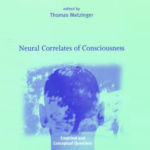
Metzinger, Thomas (1999) “The Subjectivity of Subjective Experience: A Representationalist Analysis of the First-Person Perspective”, Chapter 20 in: Thomas Metzinger (ed.) ➜Neural Correlates of Consciousness [PDF, whole book]

Rothman, Joshua (2017) ➜”Daniel Dennett’s Science of the Soul”, New Yorker, 27 March 2017

Taft, Michael (2012) ➜”An Interview with Thomas Metzinger: What Is the Self?”, Being Human, 28 September 2012

Wallace, B. Alan (2003) ➜”A Science of Consciousness: Buddhism (1), the Modern West (0)” [PDF], The Pacific World: Journal of the Institute of Buddhist Studies
Wallace sets out his case that there is a basic dualistic split between what he calls 1st-person and 3rd-person methodologies to investigate the mind:
Western civilization has never developed a science of consciousness. I shall then argue that Buddhism has made major strides in developing such a science, and that the contemplative refinement of attention, and the subsequent utilization of such attention in exploring the mind firsthand, plays a crucial role in such an endeavor. Such training of the mind is vital for investigating the nature of consciousness, and it is also an important prerequisite to transforming consciousness in the pursuit of mental health and genuine well-being. While Buddhism has a rich contemplative tradition for the first person exploration of states of consciousness, it never developed the sciences of the brain and behavior that we have in the modern West. So the integration of the first person methodologies of Buddhism with the third person methodologies of the cognitive sciences may lead to a richer understanding of consciousness than either Buddhist or Western civilization has discovered on its own.
Siding with philosophers like David Chalmers who insist that there is a “Hard Problem of Consciousness” to be resolved, Wallace holds that there is a truly existing “explanatory gap”:
As neurologist Antonio R. Damasio recently commented, “the biological processes now presumed to correspond to mind processes in fact are mind processes and will be seen to be so when understood in sufficient detail . . . the private personal mind . . . indeed is biological and will one day be described in terms both biological and mental.” […] I questioned Damasio on this point, and he responded that in his book The Feeling of What Happens, he goes to great pains to explain that neural patterns are not equivalent to mental images. There is an explanatory gap, he points out, regarding the process by which a neural pattern is converted to a mental image; and neuroscience, in particular, and science, in general, may never be able to bridge that gap. He further acknowledges that the “physicality” of mental phenomena has not yet been identified scientifically; it is simply a working hypothesis.
Pre-Reading – Contemporary perspectives on rebirth (Optional)
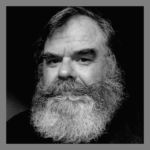
Jayarava (2015) ➜”There is No Life After Death, Sorry”, Jayarava’s Raves
Jayarava takes a staunchly anti-dualist perspective:
I’ve put considerable effort into undermining the idea of dualism. I’ve tried to show that it is not credible and does not produce meaningful predictions. Dualism is a bad theory. Monistic theories by contrast continue to make predictions about how the mind operates that turn out to be accurate. (See for example this article on ghosts). Sean Carroll’s argument will take this a step further. The dualistic matter/spirit framework has nothing to do with Buddhism. I’ve tried to show that such matter/spirit dualism is an ontological conclusion that is not supported by the epistemology of Buddhism.
Basing his positions on the work of Seal Carroll, Professor of physics at Cal Tech, Jayarava is impatient with metaphysical discussions of the nature of consciousness, especially the dualistic views of David Chalmers and his “Hard Problem of Consciousness”:
Indeed [Carroll’s] view is that Quantum Field Theory accurately describes reality: reality is fields. All the reliable evidence we have points to a universe composed of fields. When we look at these fields the nature of them means that what we actually see is matter and energy. After centuries of studying matter in controlled ways there is no behaviour of matter and energy, at the scale relevant to the functioning of human beings, that has been observed under controlled conditions, which requires extra laws of physics. Thus the only sensible philosophical view is monist. We might not know how the mind works, but we have no reason to propose some other thing that can interact with matter. This will become a refrain: if it can interact with matter we’d have detected it by now. In this view the mind is a function rather than a thing or stuff. The mind is what the brain does.
However we have a legacy view which is dualist. This legacy is probably as old as anatomically modern humans and it says, mainly on the basis of interpretations of private experiences, that the mind not made of the same stuff as the rest of the universe. The view is that there is a stuff we might call “spirit” that makes up an invisible and intangible “world of spirit” in parallel to the world of matter and energy and that this spirit animates our bodies (which are otherwise cold dead matter). We now have secular versions of this dualism which argue that experience cannot be explained in monist terms, famously associated with Dualist philosopher David Chalmers and the so-called “Hard Problem of Consciousness”. However all dualism does is deflect the Hard Problem, is does not answer it. What’s worse is that it defines the Hard Problem as insoluble because the stuff that consciousness is made of cannot be an object of study. Game over for science.
Invoking an invisible and intangible stuff that somehow undetectably also interacts with matter and energy to make us alive and conscious is not logical. Either the second stuff interacts with matter and energy and can be detected in the usual ways, or if it cannot be detected in the usual ways then it cannot interact with matter and energy. If it does not interact with matter and energy, then, for example we could not see it or hear it the way that people claim to. Equally a “body” made of this second stuff could not see or hear either. A subtle body would either be completely unable to interact with the world (to see it, hear it, feel it) or we would be able to detect it. There are no other options.
Last updated 7 November 2017